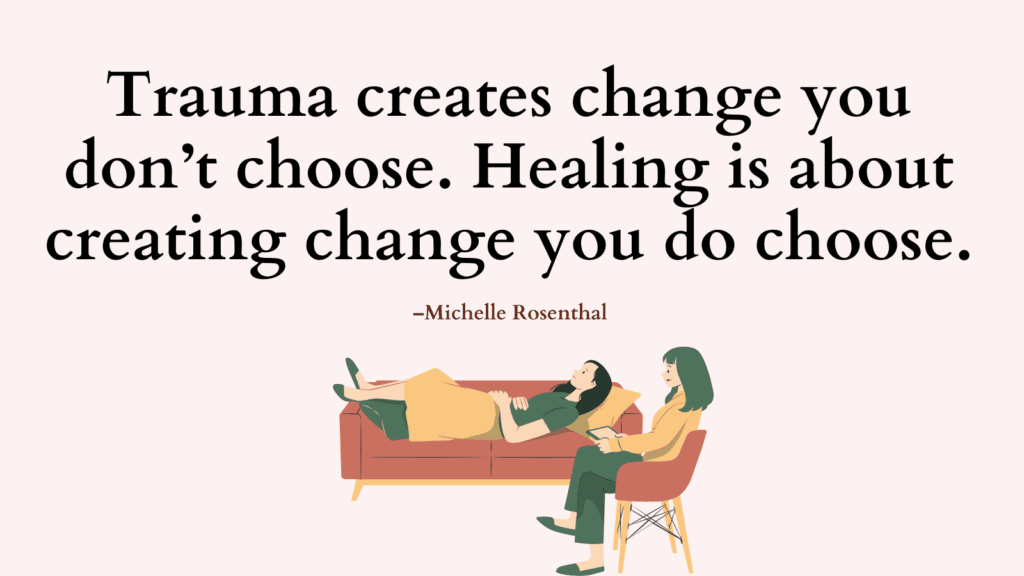Today you’ll learn all about brainspotting risks and side effects.
What Is Brainspotting?
Brainspotting is an innovative therapy that combines aspects of EMDR, and brain and body-based therapies. (*)
Brainspotting therapy is based on the belief that certain eye positions can access specific ‘brainspots’ where traumatic memories are stored and help you process emotions related to those memories. (*)
Brainspotting therapy is used to treat issues like PTSD, depression, anxiety, substance use disorders, etc. (*) (*)
Typically, Brainspotting treatment lasts for about six sessions.
Related: Brainspotting Vs EMDR (Which One Is More Effective?)
How Does Brainspotting Work?
Brainspotting developed out of an EMDR session in 2003, when Dr. David Grand noticed his client’s trauma emerged when their eye position was fixed in a specific position.
Dr. Grand looked for this pattern with other EMDR clients and discovered that each patient had a specific eye positions where they could access traumatic memories and emotions.
Dr. Grand, believes that eye position correlate to certain places or ‘spots’ in the brain that store traumatic memories.
Each person’s brainspot is different, so the therapist needs to first locate the spot using eye movement (right and left; up and down).
Once the brainspot is identified, brainspotting uses mindful awareness to process these memories and emotions.
Brainspotting Risks and Side Effects
While Brainspotting has shown promise in treating various mental health concerns, it is important to be aware of possible considerations:
1. Emotional reactivation
Brainspotting may involve exploring and processing intense emotions and traumatic experiences.
This can potentially lead to emotional reactivation, where individuals may temporarily experience heightened emotions or have vivid memories resurface during or after a session.
2. Temporary discomfort
Some individuals may experience temporary discomfort during Brainspotting sessions.
This could manifest as physical sensations, emotional distress, or heightened anxiety.
It is important for the therapist to create a safe and supportive environment to help individuals navigate these experiences.
3. Uncovering buried memories
Brainspotting therapy may involve delving into unconscious or repressed memories.
As a result, there is a possibility of unearthing previously unknown or forgotten traumatic events.
This can be a challenging and emotionally distressing process, requiring careful navigation and support from a trained therapist.
4. Intensification of symptoms
Initially, some people may experience a temporary intensification of symptoms before experiencing relief.
This is often referred to as a “healing response” and can occur as part of the therapeutic process.
It is crucial for the therapist to closely monitor these reactions and adjust the pace of the therapy accordingly.
It is worth noting that while these risks and side effects are possible, they are typically managed and minimized by a skilled and compassionate therapist.
Building a strong therapeutic relationship, establishing trust, and creating a safe space are essential in addressing and mitigating any potential adverse reactions.
It is important to openly communicate with your therapist about any concerns or discomfort you may experience during the Brainspotting process, as they can provide guidance and support throughout your treatment journey.
Related: How to Practice Self-Brainspotting Safely?
Precautions and Safety Measures
The following are some general precautions and safety measures that you may consider when undergoing brainspotting therapy:
1. Choose a licensed and trained brainspotting therapist who can guide you through the process and ensure your safety.
2. Inform your therapist of any medical or mental health conditions that may affect your ability to undergo the therapy.
3. Ensure that you are in a safe and comfortable environment during the therapy session.
4. If you feel uncomfortable or overwhelmed at any point during the session, let your therapist know immediately.
5. Take care of yourself after the session by practicing self-care activities such as getting adequate rest, eating healthily, and engaging in physical activity.
6. Follow up with your therapist after each session to monitor your progress and discuss any concerns you may have.
Remember, brainspotting is a powerful therapeutic technique that can bring up deep emotions and memories. So it’s essential to take all necessary precautions to ensure your safety and well-being during the process.

Conclusion
Brainspotting therapy is considered safe and highly effective in treating a wide range of disorders.
However, one risk of brainspotting is the possibility that you may experience intense, overwhelming emotions related to traumatic experiences during the session.
Because Brainspotting is a subcortical, rapid processing method, you may also feel emotionally and physically exhausted, as if you had a powerful release, after the session is over. Some describe that feeling as a feeling of peace and calm.
References
- Brainspotting Therapy: Definition, Techniques, and Efficacy (verywellmind.com)
- Research and Case Studies – Brainspotting
- Recognition of the neurobiological insults imposed by complex trauma and the implications for psychotherapeutic interventions – PMC (nih.gov)
- Brainspotting – the efficacy of a new therapy approach for the treatment of Posttraumatic Stress Disorder in comparison to Eye Movement Desensitization and Reprocessing | Hildebrand | Mediterranean Journal of Clinical Psychology (unime.it)



